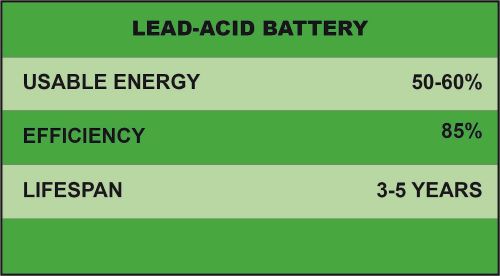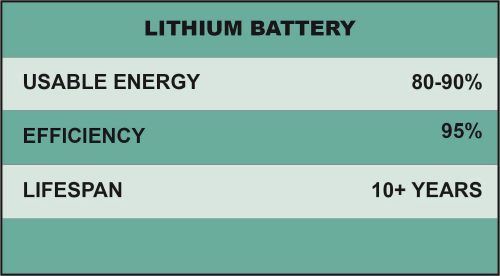As more people seek sustainable energy solutions, solar energy has become a popular choice. One crucial component of solar energy systems is the solar battery.
This guide explains how solar batteries work, providing a simple overview of their function, types, and maintenance.
Table of Contents
What Are Solar Batteries?
Solar batteries store the energy generated by solar panels for later use. This stored energy can power your home when the sun isn’t shining, such as during the night or on cloudy days. There are several types of solar batteries, with the most common being lead-acid and lithium-ion batteries.
Basic Components of Solar Batteries
Solar batteries are composed of several key components:
- Cells: The basic unit of a battery where chemical reactions occur.
- Electrolyte: A substance that allows ions to move between the electrodes inside the battery.
- Electrodes: The anode and cathode where the chemical reactions happen.
These components work together to store and release energy. The electrolyte facilitates the movement of ions, which generates an electrical current.
How Solar Batteries Work
Solar panels convert sunlight into electricity. When the panels produce more electricity than your home uses, the excess energy is stored in the solar batteries. This process involves converting the electrical energy into a chemical form that the battery can store.
When your solar panels aren’t generating enough electricity (e.g., at night), the stored energy in the battery is converted back into electricity. This electricity is typically in DC (direct current) form, which an inverter converts to AC (alternating current) to power your home appliances.
Different Types of Solar Batteries
There are several types of solar batteries, but lead-acid and lithium-ion batteries are the most commonly used for residential and commercial installations.
Lead-Acid Batteries
These are the oldest types of rechargeable battery. They’re relatively cheaper than lithium and other types of batteries which makes them an attractive option for many first time solar battery owners.
Advantages: Low initial cost, proven technology.
Disadvantages: Requires regular maintenance, lower energy density, shorter lifespan.

Lithium-Ion Batteries
These are a newer, more efficient technology. They are also much more expensive than lead acid batteries. They have a higher energy density which means they pack more energy while taking up less space in your home or business.
Advantages: High energy density, long lifespan, low maintenance.
Disadvantages: Higher initial cost.

Factors Affecting Solar Battery Performance
Aside from the technology it uses, these are some of the key factors that determine or affect the performance of a solar battery.
Capacity
The capacity of a battery is the amount of energy it can store, typically measured in kilowatt-hours (kWh). Several factors determine and affect battery capacity:
- Battery Size: Larger batteries can store more energy.
- Battery Age: Over time, a battery’s capacity can diminish due to wear and tear.
- Temperature: Extreme temperatures can reduce a battery’s effective capacity.
- Usage Patterns: Frequent deep discharges can degrade capacity more quickly.
Depth of Discharge (DoD)
Depth of Discharge (DoD) refers to the percentage of a battery’s capacity that has been used. For example, if a battery with a 10 kWh capacity has a DoD of 60%, it has used 6 kWh of its stored energy.
The higher the DoD, the more strain is placed on the battery, potentially reducing its lifespan.
To maximise battery life, you should always avoid discharging a battery completely.
Lithium-Ion batteries can handle higher DoD (up to 80-90%) without significantly affecting lifespan. Lead-Acid batteries optimal performance is at a lower DoD (around 50%) which prevents degradation.
Charge and Discharge Cycles
A charge cycle is one complete discharge and recharge of a battery. Each cycle affects the capacity and overall lifespan of the battery. The more charge cycles a battery undergoes, the shorter its lifespan becomes.
The number of cycles a battery has varies by type. Lithium batteries generally have between 2,000 to 5,000 cycles while lead-acid batteries typically provide around 500 to 1,000 cycles.
Temperature
Temperature can make or break battery performance. High temperatures can accelerate the chemical reactions within a battery, leading to faster degradation and reduced lifespan. Low temperatures on the other hand can slow down chemical reactions, reducing the battery’s ability to store and release energy efficiently.
The ideal temperature range for most batteries is between 20°C and 25°C (68°F to 77°F). Maintaining this range can help ensure optimal performance and longevity.
Regular Maintenance Practices
Usage patterns, maintenance and storage conditions will play the biggest role in the lifetime performance and overall lifespan of a solar battery. If you take away anything from this article it is this:
- Stick to the battery Depth of Discharge
- Avoid overcharging
- Install the battery where it will not be exposed to extreme heat or cold
For more information or to consult with a solar energy expert, visit our Facebook page or send a WhatsApp message.